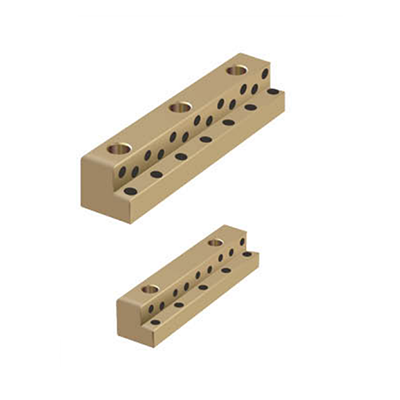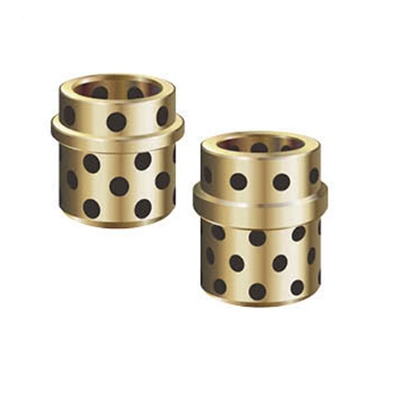When selecting Self-lubricating flanged bushes, the clearance between the bushing and the shaft is a crucial consideration. This clearance not only determines the interaction between the bushing and the shaft, but also directly affects the lubrication effect, wear rate, operating stability, and overall system performance and life.
1. The influence of fitting clearance on lubrication effect
Lubrication is a key factor in ensuring the normal operation of mechanical equipment, reducing wear and extending life. A too small fitting clearance may make it difficult for lubricating oil to fully enter the fitting surface, resulting in poor lubrication. This is because too small a gap limits the flow of lubricating oil, preventing it from being effectively distributed to the contact surface between the bushing and the shaft, resulting in direct friction between the contact surfaces, increasing wear and heat. Excessive fit clearance may also have a negative impact on the lubrication effect. Excessive clearance will make the lubricating oil easy to lose and prevent the formation of a stable oil film between the bushing and the shaft. This will lead to insufficient lubrication, causing excessive friction and wear between the bushing and the shaft, and may even cause vibration and noise. Proper fit clearance is the key to ensuring good lubrication. Proper clearance allows the lubricating oil to form a uniform oil film between the bushing and the shaft, reducing friction and wear, and improving the operating efficiency and service life of the equipment.
2. The influence of fitting clearance on wear rate
Wear is an inevitable phenomenon in the operation of mechanical equipment, but excessive wear will shorten the service life of the equipment. The matching clearance between the bushing and the shaft has a direct impact on the wear rate. If the gap is too small, the contact pressure between the bushing and the shaft will be too large, thereby aggravating wear; if the gap is too large, the bushing will swim and vibrate on the shaft, resulting in uneven and accelerated wear. Therefore, choosing the appropriate fitting clearance is of great significance to reduce the wear rate and extend the life of the equipment.
3. The impact of fit clearance on operational stability
The size of the fitting clearance directly affects the friction and wear between the bushing and the shaft. If the gap is too small, it can result in increased friction, excessive heat and wear, which can shorten the life of the equipment. At the same time, excessive friction may also cause increased vibration and noise during equipment operation, reducing operational stability. The size of the fit gap also determines the accuracy of the assembly. If the gap is too large, the position of the shaft within the bushing may be unstable, causing the equipment to shake and jump during operation, reducing operational stability. If the gap is too small, it may cause assembly difficulties or even damage the parts. Proper fit clearance can reduce vibration and noise when the equipment is running. When the clearance is too large, the relative motion between the shaft and the bushing will increase, resulting in vibration and noise. This vibration and noise will not only affect the operational stability of the equipment, but may also have a negative impact on the health and safety of operators.
4. Selection and adjustment of fit clearance
When selecting Self-lubricating flanged bushes, the appropriate fit gap needs to be determined based on the specific application scenario and needs. This includes considering factors such as the load, speed of the equipment, working environment and lubrication method. At the same time, adjustments and optimizations need to be made based on the actual operating conditions of the equipment. Generally speaking, the best fit can be achieved by measuring and adjusting the gap value between the bushing and the shaft.


 English
English Español
Español



